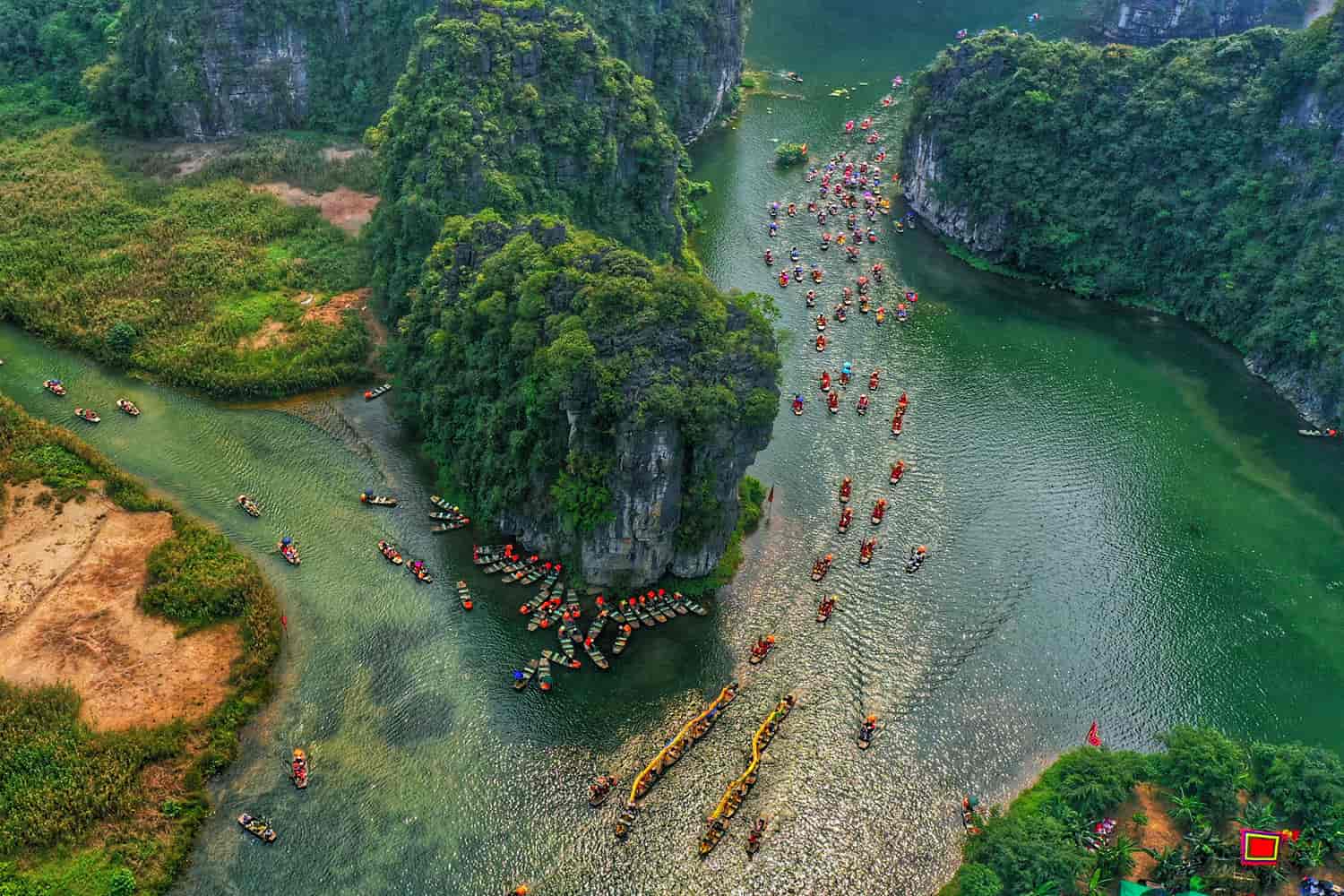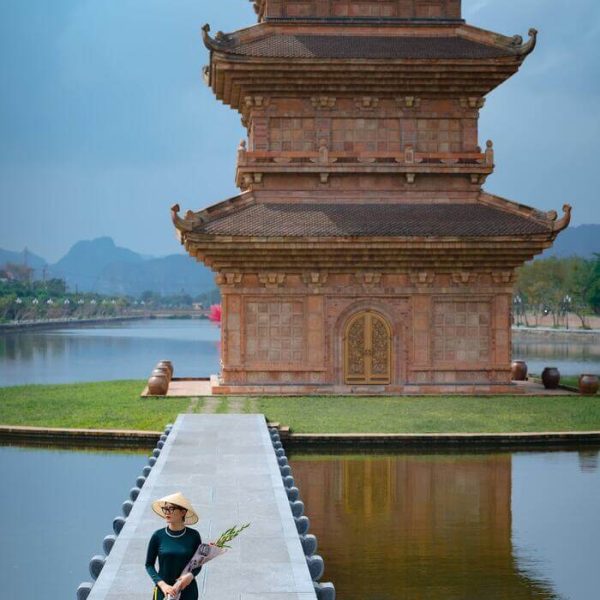Ninh Binh is located in the southernmost part of the North Central region of Vietnam, approximately 90 kilometers south of the capital city, Hanoi. It serves as the border region for three geographical areas: Northwest, the Red River Delta, and North Central. To the north, it shares borders with Ha Nam province; to the east, it borders Nam Dinh province; to the southeast, it faces the East Sea; to the west and southwest, it borders Hoa Binh and Thanh Hoa provinces. Ninh Binh covers a natural area of around 1,386 square kilometers and has a population of approximately 952,000 people. Ninh Binh is known for its abundant tourism resources, including numerous historical and cultural sites, famous landscapes, and valuable natural ecosystems.
Despite its relatively small size, Ninh Binh boasts diverse terrain, including mountains, plains, and coastal areas, representing the various landscapes of Vietnam on a smaller scale. With three-quarters of its area covered by hills and mountains, Ninh Binh features diverse karst landscapes and rich flora and fauna, giving rise to many tourist destinations with beautiful natural scenery that attract visitors. Some of the famous places include Tam Coc – Bich Dong, Cuc Phuong National Park, Van Long Wetland Nature Reserve, Yen Thang Eco-tourism Area, Dong Thai Lake, Thung Nham Bird Park, Thung Nang, Thien Ha Cave, Kim Son coastal areas, hot mineral springs, and more. Particularly, the Trang An Scenic Landscape Complex has been recognized as a UNESCO World Heritage Site since 2014, marking Vietnam’s first mixed cultural and natural heritage site in Southeast Asia.
Not only renowned for its beautiful landscapes, Ninh Binh is also a land rich in historical and cultural traditions, with 1,821 historical relics being officially recognized. It holds a sacred place in Vietnamese history, serving as the capital of the first centralized feudal state in Vietnam for 42 years (from 968 to 1010). It is closely associated with three dynasties: Dinh, early Le, and the beginning of the Ly dynasty. Presently, Ninh Binh possesses culturally and historically significant relics, such as Hoa Lu Ancient Capital, Phat Diem Stone Cathedral, Bich Dong Pagoda, Bai Dinh Pagoda, the Temple of the King Dinh Tien Hoang, and the Temple of the Queen Mother.

In addition to its historical and cultural relics, Ninh Binh is also famous for its intangible cultural heritage, including poetry, festivals, traditional folk music, and culinary traditions. Ninh Binh hosts 260 festivals, many of which are well-known both nationally and internationally, such as the Hoa Lu Festival (recognized as a national intangible cultural heritage), Bai Dinh Pagoda Festival, Trang An Festival, and Thai Vi Temple Festival. It is also the birthplace of traditional crafts and trades, such as Ninh Van stone carving, Bo Bat ceramics, Van Lam embroidery, Kim Son bamboo and rattan weaving, and more. The long-standing cultural customs and traditions have created a unique and captivating culinary culture in Ninh Binh, with famous dishes including goat meat, burnt rice, Kim Son wine, Yen Mac nem, Gia Vien fermented shrimp paste, Kim Son rice vermicelli soup, and more.
The beautiful landscapes, ancient historical relics, and delicious local cuisine of this extraordinary land are sure to leave a lasting and unforgettable impression on travelers. Below are some articles compiled and shared by VnCarRentals.com’s to provide you with valuable insights and experiences for your upcoming journey.
